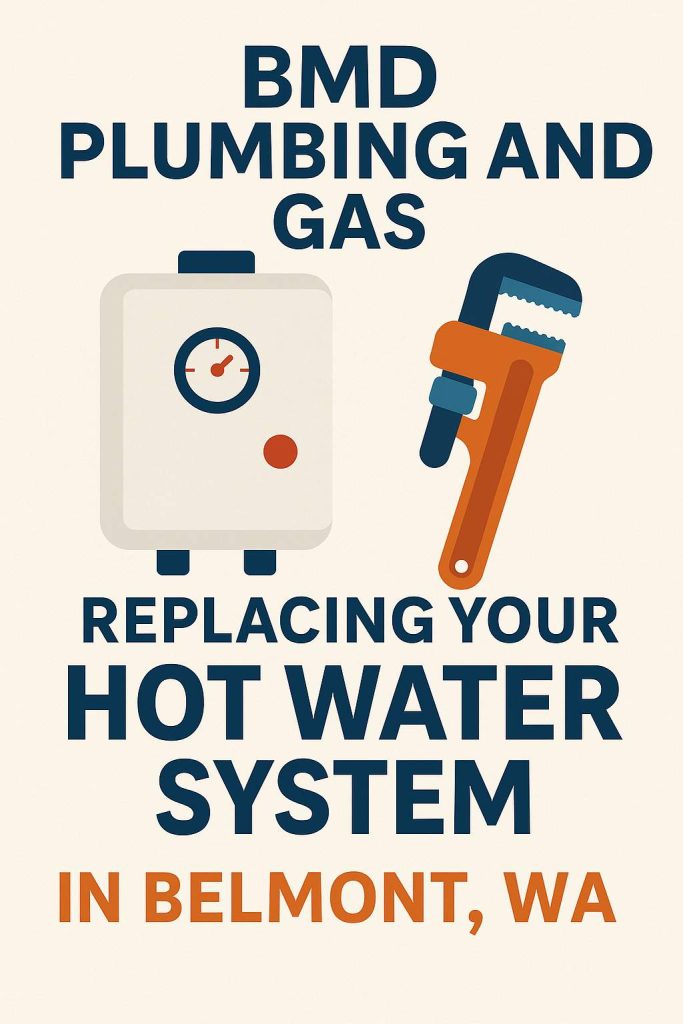A reliable hot water system is essential for daily household operations. When performance starts to decline, recognising early warning signs can help homeowners in Belmont avoid emergency breakdowns or costly replacements. Below is a practical checklist to help determine whether your unit may require professional repair or replacement.
Checklist: Signs Your Hot Water System May Need Attention
- Fluctuating Water Temperatures
If your water temperature swings unpredictably—too hot one moment and cold the next—this may point to a malfunctioning thermostat, faulty tempering valve, or mineral build-up on heating elements. These fluctuations not only affect comfort but can pose a scalding risk, particularly for children or elderly occupants. It’s essential to have the system assessed before internal damage worsens or safety becomes compromised.
- Visible Leaks Around the Tank or Pipes
Leaks are among the clearest indicators of a compromised system. Water around the base of the tank or dripping from joints, valves, or pipework may result from pressure relief valve failure, corrosion in the tank lining, or pipe fatigue. Even small leaks can lead to mould growth, structural damage, and inflated water bills. A licensed plumber should be called immediately to investigate the source and determine whether a component repair or full replacement is required.
- Unusual Noises
Over time, mineral deposits from hard water can settle at the bottom of the tank. As the unit heats, this sediment can create loud popping, hissing, or rumbling noises. These sounds indicate that your system is working harder than necessary to heat water, reducing overall efficiency and accelerating wear on internal components. Regular system flushing may resolve the issue, but persistent noise could point to a more serious internal fault.
- Reduced Hot Water Capacity
If you notice your showers turning cold quicker than usual or hot water running out after minimal usage, your system may be losing storage or heating efficiency. This is often due to sediment build-up, partial element failure, or aging insulation inside the tank. Systems that once met the household’s demand may now be undersized due to changing usage patterns or deteriorating performance.
- Rusty or Discoloured Water
Brown, orange, or red-tinted water from hot taps typically indicates internal corrosion within the tank or associated pipework. This may be due to a deteriorating sacrificial anode (common in storage tank systems), which, once depleted, allows rust to form. Besides being unpleasant and unsanitary, this corrosion can eventually cause tank perforation, leading to leaks or system failure.
- Age of the System
Most conventional hot water systems—electric, gas, or storage—have an average service life of 8 to 12 years. Systems nearing or beyond this age are more likely to suffer from inefficiency, outdated safety components, and increased maintenance requirements. Older models also lack the energy-saving features found in newer systems, such as high-efficiency burners or smart controllers. If your system is approaching this age bracket, it’s worth considering a proactive replacement.

- High Energy Bills
An unexpected spike in energy costs—especially when usage habits remain the same—can often be traced back to a struggling hot water system. Inefficient heating elements, thermostat faults, or heat loss through deteriorated insulation can all cause the system to work overtime, drawing more power or gas. Comparing bills from previous seasons can help pinpoint trends, and a professional assessment can confirm whether the water heater is to blame.
- Poor Water Pressure
Low or uneven hot water pressure may be linked to internal scale build-up, partially closed valves, or a blocked tempering valve. In older properties, ageing galvanised pipes can also restrict flow. If cold water pressure remains strong while hot water pressure drops, the issue is likely within the hot water system itself. Addressing this early can improve efficiency and extend the system’s lifespan.
When to Call a Professional
If you notice one or more of the above signs, it’s advisable to contact a qualified hot water plumber Belmont for assessment. Prompt action can often prevent a complete system failure and reduce long-term costs.
For systems showing multiple or recurring issues, hotwater replacement Belmont may be the most cost-effective and efficient solution. Newer units often offer improved energy efficiency, longer warranties, and greater reliability—making them a worthwhile investment for homeowners.
Conclusion
Staying alert to early warning signs and conducting routine checks can help you maintain a functional and efficient hot water system. If you’re unsure, engaging a licensed professional to assess your setup ensures peace of mind and long-term performance.